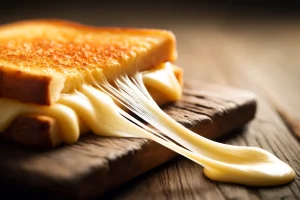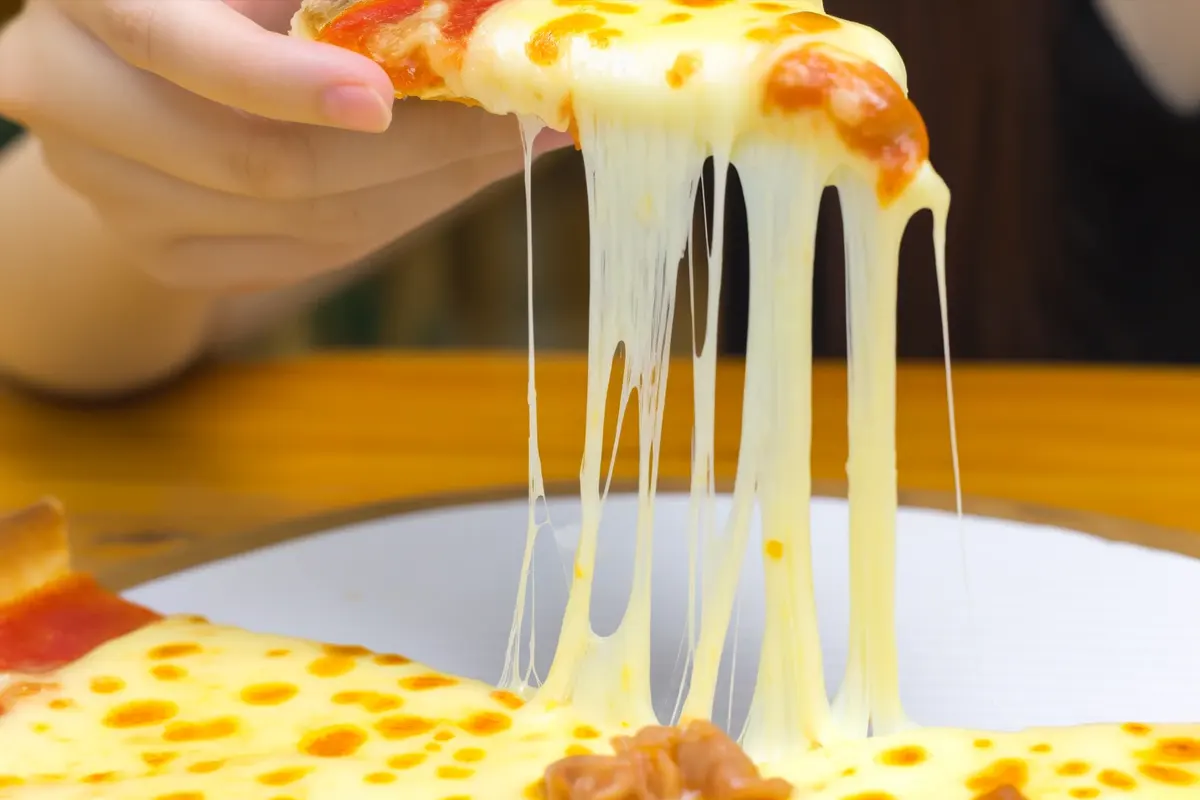Diving into the world of culinary delights, cheese stands out as a versatile and beloved ingredient, celebrated for its ability to transform dishes with its gooey, melty goodness. Understanding cheese’s diverse role in culinary arts is enhanced by exploring its origins and production, as detailed by the FAO in their overview of dairy products (FAO – Dairy production and products). From the stringy joy of a well-topped pizza to the creamy bliss of a rich fondue, the magic of melting cheese has captivated food enthusiasts for centuries. But what lies behind this transformative process? In this article, we’ll unwrap the science and art of cheese melting, exploring not just the why and how but also offering practical tips to elevate your cheesy creations.
Introduction to Cheese Melting
Cheese, in its myriad forms, holds a special place in the hearts (and stomachs) of folks around the globe. Its ability to melt, however, is a subject shrouded in both science and a touch of mystery. Here, we’ll embark on a journey to demystify the phenomenon of cheese melting, starting with a peek into the diverse world of cheese and followed by a deep dive into the scientific underpinnings that dictate whether a cheese drapes over your dish like a velvety cloak or stubbornly holds its shape.
Introduction to Cheese and Its Varieties
Cheese, with its rich history, is much more than just a topping; it’s a culinary mainstay with a staggering array of varieties each bringing its unique texture, flavor, and, importantly, melting characteristics to the table. But ever wondered why some cheese melts into a dreamy pool of deliciousness while others seem almost resistant to change, even under intense heat?
The Science of Cheese Melting
At the heart of cheese melting lies a complex interplay of fat, moisture, and proteins, primarily casein. When heat is applied, cheese undergoes a transition from solid to liquid, a process deeply influenced by its moisture content, fat ratio, and acidity level. But it’s not just about turning up the heat; the age of the cheese also plays a pivotal role, with younger cheeses typically offering a more graceful melt than their aged counterparts.
So, why isn’t my cheese melting in my broccoli soup? The answer often lies in the type of cheese used. High-acid cheeses, or those that are extensively aged, might stubbornly refuse to blend into soups, leaving you puzzled and your soup, well, less cheesy than desired. Understanding the melting behavior of different cheeses can turn this culinary conundrum into a thing of the past, ensuring your dishes achieve the perfect, desired consistency every time.
In the realm of culinary arts, cheese melting isn’t just a matter of science; it’s an art form, where the right knowledge can transform good dishes into great ones. Stay tuned as we delve deeper into the factors influencing cheese melting, ensuring you’re well-equipped to choose the perfect cheese for every culinary endeavor.

Factors Influencing Cheese Melting
Embarking further into our cheesy expedition, we now unravel the enigma of why some cheeses lavishly cascade down a hot slice of toast, while others stubbornly retain their form. It turns out, the meltability of cheese is not a whimsical trait but rather a consequence of its intrinsic properties. Let’s peel back the layers and explore the pivotal factors that dictate this fascinating behavior.
Composition and Its Impact on Melt and Stretch
The dance of melting cheese begins at the microscopic level, with casein proteins and fat playing the lead roles. Imagine casein as a network of proteins intertwined with calcium, holding the structure of cheese together like a tight hug. When heat enters the scene, it persuades the fat within the cheese to soften, and this network begins to relax, leading to that ooey-gooey melt we all adore.
However, not all cheeses are eager participants in this dance. The level of acidity in cheese acts as a chaperone, influencing how freely the casein proteins can move. Higher acidity tightens the embrace between these proteins, making the cheese less likely to melt. This interplay between the composition and acidity crafts a spectrum of meltability, from the lush flow of Mozzarella to the stubborn resilience of Feta.
The Role of Aging in Cheese Melting
As cheese ages, it undergoes profound transformations, not just in flavor but also in structure. Aging, in the world of cheese, is akin to a maturation process where moisture gradually bids adieu, leaving behind a denser matrix of fats and proteins. This concentration of proteins, especially in aged cheeses like a sharp Cheddar or a noble Parmesan, makes them less prone to melting. The aged cheeses, with their complex flavor profiles, offer a trade-off; they bring depth to dishes but may not always provide the silky texture that a younger cheese would.
This exploration into the factors influencing cheese melting serves not just to satisfy culinary curiosity but to arm you with the knowledge to make informed choices in your cooking endeavors. Whether you’re crafting a gooey grilled cheese sandwich or a sophisticated cheese platter, understanding these factors ensures that your cheese not only complements the flavor profile of your dish but also behaves just as you expect it to, melting into perfection or holding its noble form.

Optimizing Cheese Melting in Culinary Practices
As we venture further into our cheesy saga, the plot thickens, or rather, melts. Having unraveled the mysteries behind why some cheeses melt and others don’t, let’s now whisk through the practical realm of culinary arts. Here, the knowledge of cheese melting transcends theory, finding its place in the bustling kitchens and cozy dinner tables. It’s all about wielding this wisdom to elevate our dishes from simply good to absolutely sublime.
Best Practices for Melting Cheese
Ah, the quest for achieving that flawless, velvety cheese melt! It begins with a gentle touch, a low and slow approach that coaxes the cheese into a luscious pool without haste. High heat, you see, is the nemesis of a smooth melt; it’s apt to bring out the oil, leaving you with a clumpy, greasy mess rather than the smooth cascade you envisioned. Patience, therefore, becomes your best culinary companion.
But there’s a twist in the tale: not all cheeses are cut from the same curd. For that dreamy melt in a fondue or atop a bubbling pizza, reach for high-moisture, young cheeses like Gruyère or Fontina. Their willingness to melt makes them the stars of the show. Yet, beware the allure of pre-shredded cheeses, for their convenience comes with a caveat. Often coated with anti-caking agents, these can hinder the melting process, turning your smooth cheese dream into a lumpy nightmare.
Cheese Selection for Different Culinary Applications
Navigating the cheese aisle with your newfound melting knowledge can turn you into a culinary wizard. Crafting the perfect grilled cheese? A slice of American cheese, known for its supreme meltability, might just be your spell. Or perhaps you’re conjuring up a sophisticated Mac ‘n Cheese? A medley of Cheddar for flavor and Mozzarella for that irresistible pull could be your magic potion.
Yet, let’s not overlook the non-melters, the cheeses that hold their ground, adding texture and bursts of flavor without blending into the backdrop. Feta and Halloumi, for instance, offer a delightful contrast in salads and grills, their integrity intact amidst a sea of other ingredients.
The art of cheese melting in culinary practices is akin to conducting an orchestra, where every cheese plays its part, contributing to a symphony of flavors and textures. By choosing the right cheese for the right dish and treating it with the respect it deserves, you unlock a world of gastronomic delights, turning the mundane into the extraordinary. So the next time you stand before your stove, cheese in hand, remember: you’re not just cooking; you’re orchestrating a masterpiece.

Advanced Topics in Cheese Melting
As we delve deeper into the heart of cheese melting, we reach the frontier of innovation and tradition, where the old-world charm of cheese making meets the cutting-edge advances of culinary science. This juncture is where cheese melting transcends its humble origins, becoming a subject of keen interest for cheese aficionados and culinary professionals alike. In this part, we explore how technological advancements and health considerations shape our understanding and application of cheese melting in modern gastronomy.
Technological Advances in Cheese Production for Improved Melting
In the realm of cheese making, technology has ushered in a new era of possibilities, particularly in enhancing cheese’s melting qualities. Imagine cheeses engineered to melt to perfection under specific conditions, tailor-made for your culinary needs. Through meticulous manipulation of enzymes and the cheese maturation process, scientists and cheese makers can now influence the meltability and stretchiness of cheese. This fusion of art and science opens up a panorama of culinary applications, from the perfect pizza topping that melts uniformly to cheese slices that drape over your burger like a golden blanket, without becoming rubbery or oily.
Moreover, the advent of plant-based and lactose-free cheese options marks a significant milestone in the cheese industry. For those with dietary restrictions or ethical concerns, these innovations ensure that the joy of a beautifully melted piece of cheese remains an inclusive experience. As we explore the Vegan Cheese Melting Options, it becomes evident that the future of cheese melting is not only delicious but also diverse and accessible.
Health and Nutritional Considerations
The act of melting cheese does more than transform its texture; it can also alter its nutritional profile. When cheese melts, it becomes more than a mere ingredient; it’s a fusion of flavors, textures, and, importantly, nutrients. However, it’s essential to tread this creamy landscape with awareness. The high temperatures involved in melting can lead to the loss of some heat-sensitive nutrients, yet, for many, the enhanced flavor and texture make it a worthwhile trade-off.
The discussion around cheese melting also brings to light the topic of lactose intolerance. The good news is that the cheese-making process naturally reduces lactose levels, and many aged cheeses contain minimal lactose, making them more digestible. This fact, coupled with the advent of lactose-free cheese options, ensures that the pleasure of enjoying melted cheese isn’t dimmed by dietary restrictions.
As we stand at the crossroads of tradition and innovation in cheese melting, it’s clear that the journey is as rich and varied as cheese itself. Whether it’s the application of modern technology to craft the perfect melt or navigating health considerations to enjoy cheese responsibly, the world of cheese melting continues to evolve, promising a future where taste, tradition, and technology converge in delightful harmony.
FAQs
In our cheese-melting saga, we’ve traversed through the valleys of varieties, climbed the mountains of melting mechanisms, and navigated the rivers of culinary application. Now, we arrive at a cozy nook, a place where curiosity brews and questions bubble up like fondue over a gentle flame. It’s the realm of FAQs, where we seek to quench the thirst for knowledge with clear, concise answers to those burning questions that cheese lovers and culinary adventurers often ponder.
Why do some cheeses not melt?
Ah, the great conundrum that stumps many a cheese enthusiast. The secret lies in the cheese’s structure and composition. Cheeses that are high in acidity or aged for a long time develop a tightly knit protein network, making them resistant to melting. Think of Parmesan or Feta; their charm lies not in a melty disposition but in their ability to add texture and bursts of flavor to dishes.
Can you fix a cheese sauce that has separated?
Fear not, for a broken cheese sauce is not the end of the road. To rescue your sauce, gently reheat it while whisking in a splash of lemon juice or vinegar. The acidity helps to emulsify the sauce, bringing back its smooth, creamy consistency. Remember, a low and slow approach is key to preventing future mishaps.
Are there any vegan cheeses that melt like dairy cheese?
The world of plant-based alternatives has seen remarkable advancements, and vegan cheese is no exception. Many vegan cheeses now boast impressive meltability, thanks to the clever use of oils, starches, and plant proteins. While they may not mimic dairy cheese perfectly in every aspect, they offer a delightful melty experience for those seeking dairy-free options.
Why isn’t my cheese melting in my broccoli soup?
Ah, a specific query with a universal appeal. If your cheese is turning into clumps rather than blending seamlessly into your soup, it could be due to the type of cheese or the temperature at which you’re attempting the feat. Opt for a cheese known for its smooth melt, like Cheddar or Gruyère, and ensure your soup is at a gentle simmer, not a rolling boil, when you add the cheese. Slowly incorporate the cheese, stirring constantly, to achieve that velvety texture you crave.
In this cozy corner of FAQs, we’ve stirred the pot of knowledge, ladling out answers to satiate your cheese-related queries. Armed with these insights, you’re now better equipped to navigate the deliciously complex world of cheese, whether you’re melting, mixing, or simply munching.

